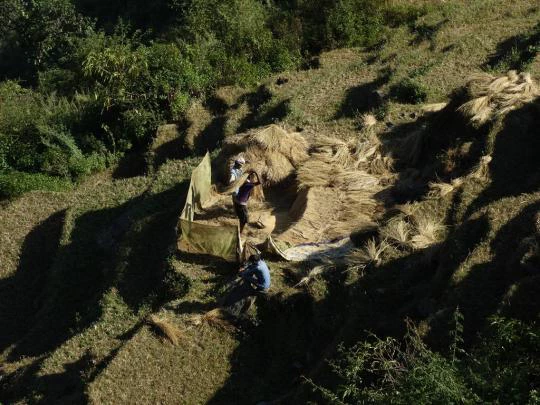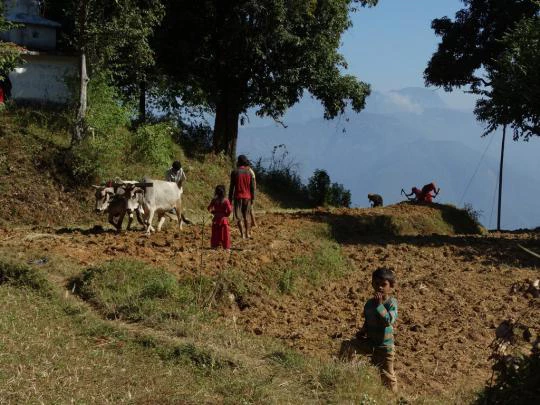
Jijodamandu, a small hilltop village in Doti district in Western Nepal is a full day’s walk from the nearest motorable road. Below the village, the hillside is littered by terraced paddy fields producing rice. Surrounding many homes in the village slightly above the terraced paddy fields, there are fruits trees planted sporadically – oranges, lemons and pomegranates. When I was leaving the village after a few days stay, my host handed me a bag of oranges. Not wanting to overreach his hospitality towards me and also knowing food security is a concern for them I initially declined his offer. But he was insistent. “For the walk back down,” he said. “Fruits we have plenty of. It is rice and grains we cannot plant enough.”
This anecdote is a case in point of majority of the rural population of Nepal. Many hilly and mountainous regions are highly suitable for producing fruits, vegetables and nuts – crops that command a higher price at markets. However, many villages do not harvest much of it because they do not have access to markets to sell their produce and no income to sustain themselves if they do not produce rice and cereals for their staple diet. Poverty compels rural populations in Nepal into subsistence farming.
The paradox in Nepal is apparent – some of the most deprived and poverty stricken regions in Nepal also have the potential of producing high value crops. For example, as shown in the World Bank’s Vision for Nepal – Policy Notes for the Government, the western regions of Nepal are highly suitable for producing apples and walnuts but they are also the regions with the greatest prevalence of poverty.
As Nepal charts its development vision it will be important to devise a strategy to incorporate such populations into the productive process of the economy. This will not only raise their income and help sustain their move out of poverty but it will also contribute to sustaining the overall growth of the economy. The key question is: how to do this?
First, physically connecting rural and remote populations to the rest of the country and internationally will lay the foundations for further progress. Without access to markets, commercialization of their products is impossible as in the case of the families in Jijodamandu where their surplus fruit production could not be sent to markets because the fruits would rot before it reached any commercial center. Constructing new roads to expand the reach and improving and maintaining existing ones will be important.

Second, support and assistance need to be provided to farmers diversifying their crop production. This may be in the form of providing them with technical know-how of planting new crops. Equally, if not more, important will be devising a plan to support farmers who have moved away from subsistence farming for a time period until the fruits of their new crops are earned.
And finally, make the nexus between producers and consumers efficient to keep transaction costs at a minimum. Looking beyond Nepal’s own borders for markets will also be key. Burgeoning India is a readymade market for Nepali produce. As income rises in India, people’s tastes and consumption patterns will change. They will likely diversify their food consumption consuming greater variety of foods and also consume more expensive foods like certain fruits and vegetables. Linking Nepal’s agriculture supply chain to Indian markets has the potential to further bolster Nepal’s agriculture income.
In recent history when looking at East Asia, development has been synonymous with export led growth focused on industrial goods. However, such a growth model suited those countries because of their close proximity to the sea and low costs of production relative to developed countries where the markets were, which gave them the comparative advantage to produce industrial goods for export. However, Nepal is landlocked and such a development strategy may not be possible. But Nepal has a large growing economy at its doorstep. Nepal may not be able to compete with the economies of scale of Indian and Chinese industries but where it can have comparative advantage is agriculture. There is no one-size-fits-all development strategy. Nepal’s strategy needs to be tailor-made for Nepal which must focus on developing a productive, sustainable and commercialized agriculture sector.
Join a Live Facebook Chat this Friday, September 5th, 5 PM – 7 PM on the World Bank Nepal Facebook page with World Bank experts Aurelien Kruse, Johannes Widmann and Markus Kitzmuller to discuss why Investment, Infrastructure and Inclusion will be key to laying the foundations for the future prosperity of Nepal.


Join the Conversation